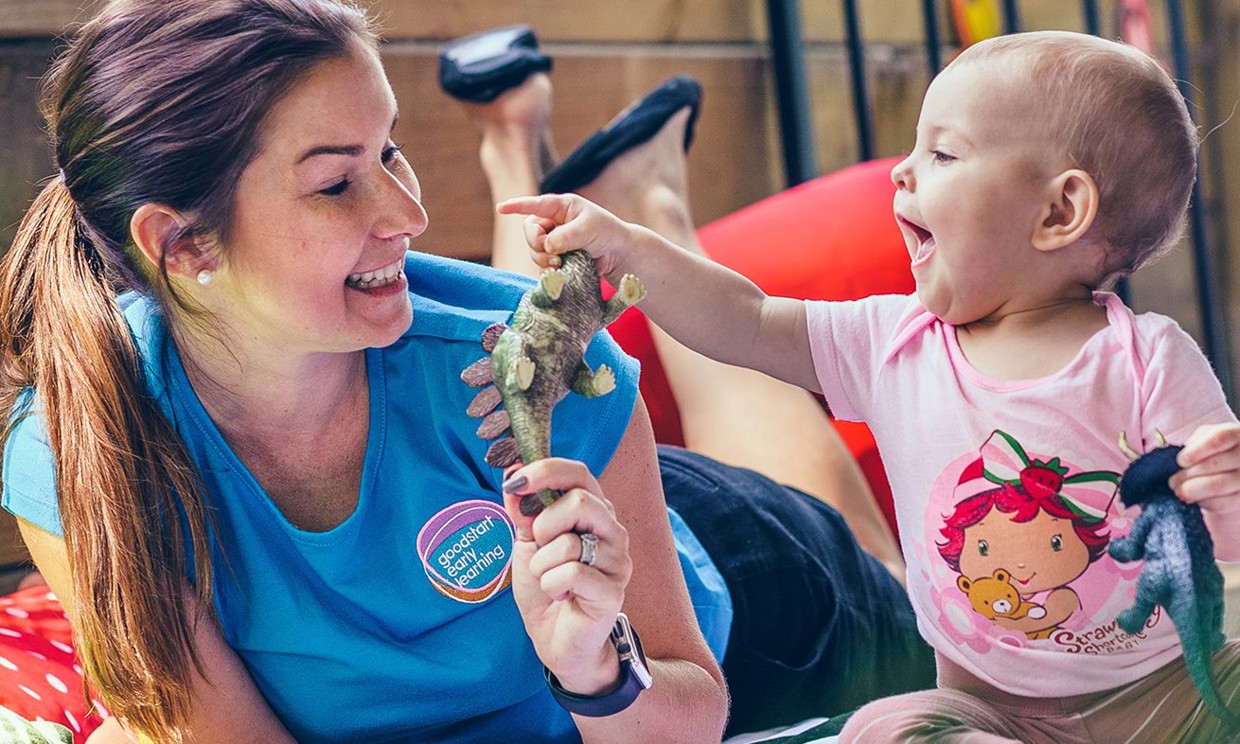Author: Danielle Flamia, Nursery Educator at Goodstart Fortitude Valley
Babies brains are, quite simply, awesome. They are born ready to learn.
In a baby’s first year, their brain will double in size with more than 1,000,000 (yes, that’s 1 million!) new neural connections formed every second.
But nature alone won’t stimulate this spectacular brain development. It’s the combination of genetics and the infant’s experiences that build the foundational structure of their brain, upon which all future learning depends.
How does play help babies learn?
Babies learn through experience and observation. They rely on all their senses as they explore their surroundings which is why our nursery rooms are rich in colours and textures, sights and sounds.
Beyond their five senses babies also need to develop body awareness and balance, so we spend time on the floor with them - rolling, crawling, climbing and cruising – helping them to move independently and build their sensory systems.
Play gives babies a reason to experiment, discover, explore and problem solve. Just like learners of all ages, as long as there is an interesting, engaging and fun question they will strive to find the answer.
The questions that infants are ‘asking’ are simple, but they determine who we are and who we grow up to be.
“Where do I belong?” “How do I be me in this world?” “What can I become?” The Early Years Learning Framework, which we follow in all Goodstart centres, is based on these fundamentals of Belonging, Being and Becoming. It is only when children feel they belong and can be themselves that they feel safe and supported to learn, grow and become.
What does play based learning for babies look like?
Play based learning with babies is all about finding the sweet spot that is both fun and challenging.
It can be as simple as holding their favourite toy above them and using it to engage their hand eye coordination, crossing their midline and tempting them to roll over onto their side and tummy, all while singing, bopping and being with them in that moment.
Play based learning with babies is often messy. Some favourite activities with children in my centre are:
- Rainbow pasta: where you cook, cool down and colour pasta with food dye.
- Coloured ice cubes: you can use these on paper to create a water colour painting or in a tub of water, letting them try to grip the ice as it slips away and melts.
- Water balloons: the ever shape-changing object that rolls, bounces and slips everywhere helps to develop hand-eye coordination and motor skills.
- Yoghurt painting: create a colour palate of yoghurt and let them paint, mix, eat and make a mess in the highchair. Easy clean up and nutritional!
- Cellophane: listen as it scrunches and crackles, look as the world turns orange, peek-a-boo I see you!
- Shredded paper: hunting for toys in the depths of the paper ocean, picking through a thousand paper worms.
- Baking: my favourite (allergy friendly) recipe for banana oat bars is one banana, one cup of oats and a sprinkling of cinnamon. Let them mash, mix, feel, taste and smell it. Mold it into mini bars bake for 12-15 minutes at 180 degree and afternoon tea is done!
Each of these experiences is allowing the child to grow and learn in ways you may not realise by:
- Using contrasting colours for visual stimulation and development
- Understanding temperatures of cold and hot
- Developing fine motor control and strength
- Watching as two colours blend to make a new one
In each instance we’re helping to build cognitive links in the brain. Small, fun and messy moments, when looked at with an educational lens, have so much meaning and importance in a child's life.
How can parents do this at home?
The key aspect in all of these experiences is you, the educator, the parent, the carer.
You have to vocalise what is happening, you have to ask the questions the baby is ‘asking’, you have to describe what they see, you have to experience the moment with them.
They’ll watch for your reactions while they are asking “Is it okay that I touch the ice cube?” “Why is it so cold?” “Will it hurt me?” “What do I do with it?” “What is that colourful liquid?”
They want to learn and grow with you by their side, and they have a right to learn and grow in a loving and caring environment that allows them to find themselves in this world. I feel privileged to be able to create this very environment each day at Goodstart Fortitude Valley.


